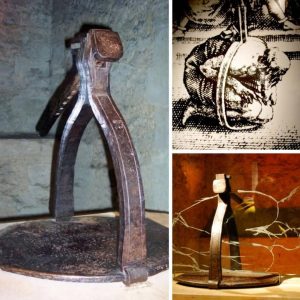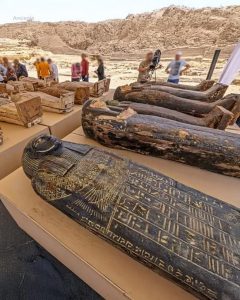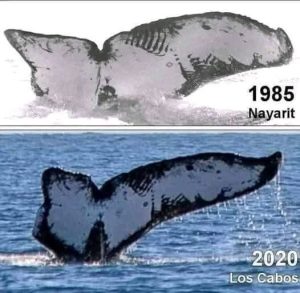History
The Timeless Countenance: Seti I’s Remarkably Preserved Face.

The Timeless Countenance: Seti I’s Remarkably Preserved Face.
By Admin,
Seti I’s visage stands as an enduring testament to Ancient Egyptian craftsmanship, hailed as one of the best-preserved faces in the annals of history. Ruling over Egypt’s zenith of wealth 3,298 years ago, Seti I, father to the legendary Ramses, secured his legacy as one of the greatest pharaohs of all time. His reign marked a pinnacle in Egyptian history, epitomized by opulence and grandeur.
Even in death, Seti I’s mummy remains a marvel of preservation. Entombed in the golden era of Egyptian mummification, his funerary practices attained unparalleled perfection. Today, Seti I’s mummy is widely regarded as the best-preserved in the world, a captivating relic bridging the ancient past with the present. As we gaze upon his timeless countenance, Seti I continues to captivate, an enduring symbol of Egypt’s rich history and the mastery of its ancient artisans.
Source: https://www.facebook.com/share/XwDsj9nC1Bx4edF4/?mibextid=xfxF2i
History
Unearthed Cruelty: The Grim Legacy of the Scavenger’s Daughter

By Tama Peretengboro
London, England – Among the many harrowing instruments of torture from medieval Europe, one of the most underettling is also one of the least known: the Scavenger’s Daughter. This sinister device, conceived during the tumultuous rule of King Henry VIII, reflects a darker chapter of England’s history, where power, fear, and brutality often walked hand in hand.
The invention is attributed to Leonard Skeffinton, who served as Lieutenant of the Tower of London. The device’s namw-an eerle play on his surname-has become a lasting, macabre tribute to its creator. Designed with the intention of forcing confession through extreme physical agony, the Scavenger’s Daughter operated by compressing the body rather than stretching it, unlike other infamous mechanisms of the time.
Although not as widely used as the torture tools associated with the Spanish Inquisition on those who encountered it. Its limited use has not diminished its historical significance, serving instead as a stark reminder of the era’s brutal enforcement of authority and religious conformity.
Today, it remains a symbol of the extremes to which regimes have gone in their pursuit of control-an unsettling artefact in the broader narrative of medieval punishment.
History
Ancient Wonders Unearthed at Saqqara:250 Coffins and 150 Bronze Statues Discovered

By Tama Peretengboro
Saqqara, Egypt – A spectacular archaeological discovery has emerged from the sands of Saqqara, where a team of Egyptian archeologists has uncovered an extraordinary cache of ancient treasures dating back over 2,500 years. The find includes 250 vividly painted wooden coffins and 150 intricately crafted bronze statues of deities from ancient Egyptian mythology.
Among the statues are stunning representations of Anubis, Osiris, and Isis central figures in the Egyptian pantheonalong with a rare and enigmatic headless figure believe to represent lmhotep, the fabled architect behind the step pyramid of Djoser. These artifacts, believed to date to around 500 BCE, offer a rare glimpse into Egypt’s late period religious beliefs and artistic traditions.
In one of the most remarkable discoveries, archeologists unearthed a coffin containing a remarkably well-preserved papyrus scroll. Preliminary analysis suggests it may include passage from the Book of the Dead, the ancient funerary text intended to guide the deceased thought the afterlife.
The collection also features finely crafted jewelry, ancient cosmetics, and a ceremonial sistrum-an instrument associated with ritual worship. Together, these items paint a vivid picture of burial customs and spiritual life in ancient Egypt.
The entire assemblage is set to be displayed at the Grand Egyptian museum in Giza, where it is expected to offer scholars and visitors alike new insights into one of history’s most enduring civilizations.
History
Whale Reunited with History: Same Marine Giant Photographed 35 Years Apart off Mexican Coast

By Staff Reporter
In an extraordinary display of nature’s memory and scientific perseverance, marine researchers have confirmed that a whale recently photographed in 2020 is the very same individual captured on camera 35 years ago, back in 1985. Both images were taken off the coast of Mexico, marking a rare and remarkable milestone in long-term wildlife documentation.
“The same whale photographed 35 years apart!” researchers declared with excitement. The identification was made possible through the distinct markings on the whale’s body and tail, which act like a natural fingerprint unique to each individual. Experts matched the recent image to the archival photo taken in 1985, confirming the whale’s identity beyond doubt.
The rediscovery of this gentle giant has stirred excitement within the marine biology community, not just for the sentimental value of the reunion, but for the valuable scientific insights it provides. It is a vivid testament to the longevity of whale species and the effectiveness of conservation efforts in the region.
Both sightings occurred in the nutrient-rich waters off Mexico’s Pacific coast—an area known to be a crucial habitat for several whale species during their migratory and breeding seasons.
This remarkable encounter highlights the importance of ongoing marine research and photo-identification programs. As one observer put it, “Both photos taken off the coast of Mexico,” reminding us that the ocean, though vast, can still yield stories of connection, endurance, and life across decades.
—Ends—


